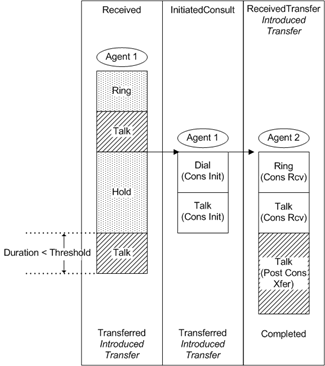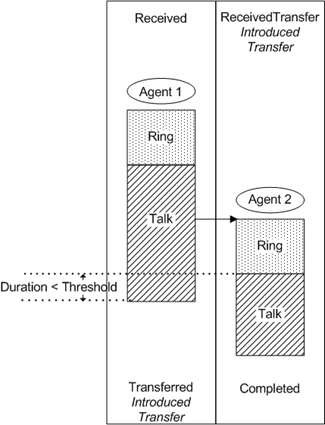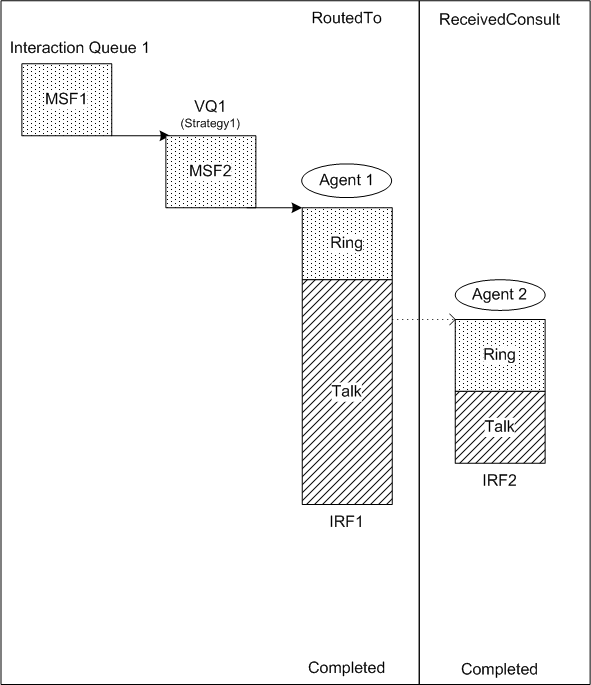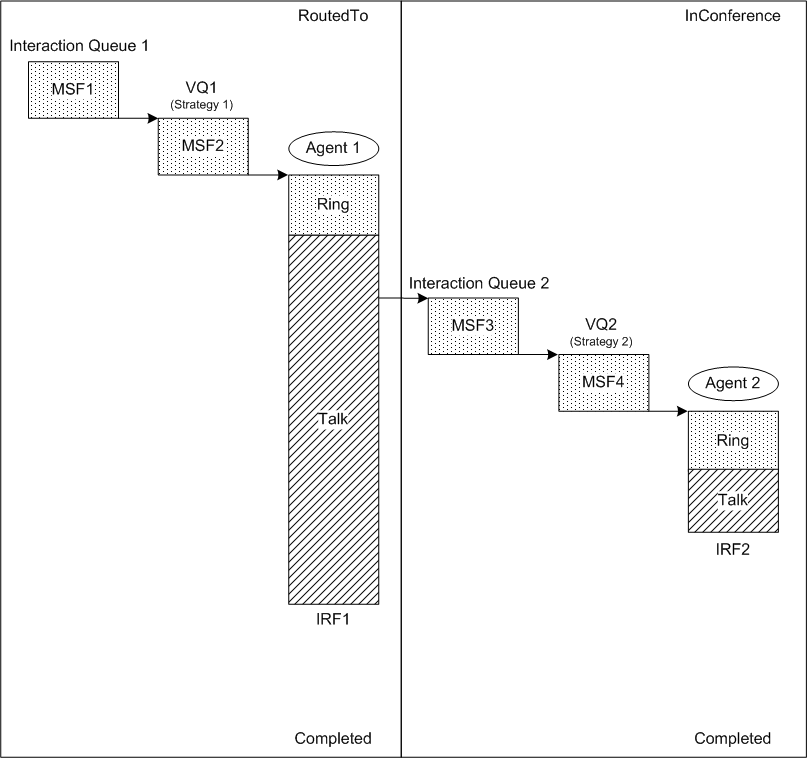User's Guide Supplement
This page supplements the Genesys Info Mart 8.1 User's Guide, to provide more information about data-related changes introduced in release 8.5.001 of Genesys Info Mart or since the initial 8.1.4 release.
Contents
New in Release 8.5.001
The following new features are relevant for the topics discussed in the User's Guide. For more information about these and other new features, see the New in Release 8.5.001 page in the Deployment Guide.
- A new role reason and technical result reason, IntroducedTransfer, identify IRFs for agents involved in an introduced transfer, and IRF metrics for these agents accrue as they do for transfers. For information about when a conference qualifies as an introduced transfer, see the description of the new configuration option, introduced-transfer-threshold. For more details about the implications for reporting data, see the Documentation Updates, below.
- Support for reporting on chat consultations and chat conferences/consultations through a queue affects the technical descriptors that will be reported and the population of various IRF metrics. For more details about the implications for reporting data, see the Documentation Updates, below. See also the supplement to the Reference Manual for your RDBMS.
- Population of thread-related columns in the ANCHOR_FLAGS table is no longer enabled by default. A new configuration option, populate-thread-facts, controls whether thread-related metrics will be populated. Enabling this functionality might negatively impact Genesys Info Mart performance.
- For Introduced Transfer:
- In Chapter 3 ("Technical Descriptors"), the tables of resource roles and technical results will be updated to include IntroducedTransfer, which applies only for voice, as a possible role reason or technical result reason associated with the resource role of ReceivedTransfer and the technical result of Transferred, respectively.
- The new technical descriptor combinations that include the IntroducedTransfer role reason or result reason parallel the existing technical descriptors for transfers and conferences. The new combinations will be added to the Appendix that lists all technical descriptors (see the technical descriptors item, below).
- In Chapter 4 ("Validated Voice Interaction Flows"), the following new call-flow diagrams will be added, to illustrate the different reporting results for a short conference that is treated as an introduced transfer, as opposed to a regular conference:
- For Chat Consultation and Chat Conference/Consultation Through a Queue:
- New technical descriptor combinations support the simplified reporting for chat conference or consultation through a queue. The technical results of Redirected/Revoked and Redirected/Rejected can now apply to InConference and ReceivedConsult IRFs for multimedia (chat) interactions. The new technical descriptor combinations will be added to the Appendix that lists all technical descriptors (see the technical descriptors item, below).
In the Appendix, a number of existing entries for technical descriptors with a technical result of Redirected incorrectly indicate that Genesys Info Mart does not use those technical descriptors. Those indicators will be removed.
In addition, in Chapter 3 ("Technical Descriptors"), the table of technical results does not show Revoked and Rejected as possible technical result reasons for the technical result of Redirected. The table will be corrected to include the following as possible result reasons for the technical result of Redirected:
- Revoked — (Multimedia only) The target resource was an agent (or a place) that was invited into the interaction, but the invitation was not accepted before the delivering-timeout that was configured in Interaction Server. As a result, the interaction was placed back into the interaction queue from which it came.
- Rejected — (Multimedia only) The target resource was an agent (or a place) that was invited into the interaction, but the invitation was rejected. As a result, the interaction was placed back into the interaction queue from which it came.
- In Chapter 2 ("Populating Genesys Info Mart Data"), information in the "Customer and Noncustomer Metrics" section remains valid for chat consultations, but statements will be revised to avoid suggesting that e-mail collaboration is the only form of multimedia consultation that Genesys Info Mart supports. In addition, the table of HANDLE_COUNT and CUSTOMER_HANDLE_COUNT values will be modified to clarify that the scenario described as "Any consultation initiated by an IRF resource" applies to InitiatedConsult IRFs (in other words, does not apply to chat consultations, since there is no InitiatedConsult IRF for a chat consultation).
- In Chapter 5 ("Validated Multimedia Interaction Flows"), the following new interaction-flow diagrams will be added:
- [+] Chat Consultation
- [+] Chat Conference Through a Queue
Chat consultation through a queue is similar, except that the resource role for Agent 2 would be ReceivedConsult.
- The following technical descriptor combinations will be added to the Appendix.
Note: Certain technical descriptors represent advance preparation to enable Genesys Info Mart to support additional interaction flows, such as the Voice Callback feature of Genesys Mobile Services.
[+] Show technical descriptors All descriptions of interaction thread functionality — for example, in Chapter 2 ("Populating Genesys Info Mart Data"), the subsection "Interaction Threads" and the description of thread metrics in the subsection "Populating Interaction Resource Data" — will note that the information applies only if Genesys Info Mart has been configured to populate thread metrics (populate-thread-facts = true).
When populate-thread-facts = false, interactions that belong to the same thread continue to indicate the same root interaction (by having a common value for MEDIA_SERVER_ROOT_IXN_GUID in the INTERACTION_FACT table), but there is no additional processing to populate the IRF.ANCHOR_FLAGS_KEY with additional details about the agent's involvement in the thread, or to consistently populate INTERACTION_FACT.MEDIA_SERVER_ROOT_IXN_ID with the interaction ID of the root interaction (indicated by MEDIA_SERVER_ROOT_IXN_GUID).
- In Chapter 2 ("Populating Genesys Info Mart Data"), the subsection about special handling for “Runaway Strategies” will be updated to include the functionality introduced in release 8.1.401.01 by the max-msfs-per-irf configuration option, which enables you to limit the number of MSF records associated with a single IRF record in the Info Mart database.
Documentation Updates to Support New Functionality
The Genesys Info Mart 8.5.0 User's Guide will include the following additional or changed information, compared with the Genesys Info Mart 8.1 User's Guide:




